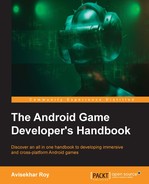Game programmers are not very different from any other software programmer. However, game programming requires stronger logical skill than software programming. The sense of game design is also different.
A game is an interactive entertainment system. A software or an application is meant to reduce a human calculative real-time task. So, it is clear that a game serves a very different purpose than a software or an application.
This is why game programming has to follow a few specifications and protocols.
Game programming can be divided into these following categories:
- Gameplay programming
- Graphics programming
- Technical programming
This is the most relevant programming for the gaming division. Gameplay programming requires a strong logical, mathematical, and analytical skill. A sense of game design is also required. Gameplay programming includes AI, user control, physics, display control, and so on.
Gameplay programmers are the ones who deal with the most responsible designers for prototyping the game.
All the visual effects and impacts are made by graphic programmers. They are responsible for the visual quality of the game. There is a vast scope to manipulate graphic assets while the game is running.
Graphics programming is all about getting the maximum from the GPU. Nowadays, most games are graphics heavy. The latest devices have separate, powerful GPUs to support heavy graphics.
Modern-age games represent an excellent quality of graphical display. All new 3D real-time lighting, particle system effect, visual motion effect, and so on entirely depend on the graphical programmer. The challenge is to increase the visual quality without affecting the game performance.
Most of the time, game performance drops significantly due to heavy art asset processing, which is never a desired situation. Shaders or graphics programmers have to balance quality and performance.
This is mostly effective when games are ported across different platforms. As we have discussed earlier, a range of hardware platforms with a wide range of hardware specifications run on Android. Separate shaders and assets are required for this kind of porting. A shader program instructs the graphic processor to render each pixel in a particular way.
This part of programming has not much to do with games; however, it ensures the game performance. Besides the performance, network management, plugin development, optimization, and so on are also part of technical programming. Here is a list of the possible areas for technical programming:
- Sound programming
- Network programming
- Game tool programming
- Research and development programming
Nowadays, sound is a mandatory part of games. Some games are even made around music. Sound programming has therefore become a part of game programming. A sound programmer mainly has knowledge of digital signal processing. Sound programmers have to work with sound designers.
Modern-age games use 3D sound systems. Sound programming plays a critical role in delivering quality sound without affecting the performance.
Old-age games were mostly made to run on a single instance. Most of the time, the game did not communicate with other instances, so there was not much need for network programming at that point in time. The modern age is the age of networking; just one instance is not enough. Multiplayer games are very common today; even standalone games communicate with other game instances just for socialization and monetization.
Network programming takes care of network latency, packet optimization, connection handling, and maintaining communication. The network programmer is also responsible for managing client-server communication and creating the architecture.
Some games run on the server. The client acts as a display device for the game instance running on the server. The transaction follows real-time syncing. Few games even follow asynchronous communication. Network programming assures the smooth and proper transition in this architecture.
Game development cannot be completed without the support of certain tools. Tool programmers can make other developers' lives a living hell or heaven. Proper game tool programming can ease the development process a lot. A lot of time and effort can be saved with the help of development tools.
We have already discussed a few development tools. However, it is not necessary for all of the tools to be game independent. There may be few tools that can be game specific. For example, a tool can be made to generate a required database to be used in a game.
This kind of programming is not primarily for making a game. Instead, this programming helps make gaming better and finds new techniques to be used for upcoming games.
This type of programming requires strong skills in technical understanding, hardware platforms, and native development. Programmers should have knowledge of native language and assembly or hardware-level language as well.
In the case of Android game development, research programmers are assigned to explore new Android devices along with a new feature and specification. These programmers then try to discover how to use the feature in the best possible way in games.
This programming is solely responsible for games having features like the use of various sensors such as gravity, light, accelerometer, and so on. The recent development of virtual reality with Android devices is a practical example of such experiments.
